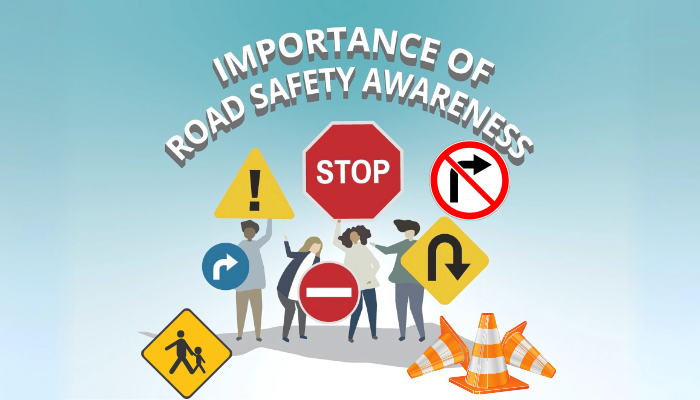Introduction
Road Safety for All: Ensuring Equal Access to Driving Education is a crucial topic in today’s world, where safe driving is essential for everyone. However, access to proper driving education is still unequal, making roads more dangerous for all. To reduce accidents and ensure fair opportunities, driving education must be accessible to every individual, regardless of their background or financial status. This blog provides insights into why driving education should be inclusive and how we can make it happen. Jeju Unicorn in this aspect is creating equal opportunities for learning road safety.

Why Equal Access to Driving Education Matters
Driving education is not just about learning how to operate a vehicle; it is about understanding road rules, managing risks, and ensuring the safety of everyone.
Key Benefits of Equal Driving Education Access:
- Reduces Road Accidents: Trained drivers make better decisions on the road.
- Improves Traffic Flow: Better driving habits lead to smoother traffic.
- Promotes Responsible Driving: Educated drivers understand their responsibilities.
- Encourages Safe Pedestrian Practices: Helps reduce pedestrian accidents.
- Ensures Compliance with Traffic Laws: Knowledgeable drivers are less likely to break laws.
By addressing the gaps in driving education, we can make Road Safety for All: Ensuring Equal Access to Driving Education a reality.
Challenges in Accessing Driving Education
Many individuals face obstacles when trying to learn how to drive safely. These challenges contribute to unsafe roads and increased accidents.
Common Barriers:
- High Cost of Driving Lessons: Many cannot afford professional training.
- Lack of Nearby Driving Schools: Rural areas often lack proper facilities.
- Limited Access for People with Disabilities: Few programs accommodate special needs.
- Gender Disparity: Women in some regions face restrictions or social barriers.
- Language Barriers: Non-native speakers struggle with understanding road signs and rules.
Tackling these challenges can make Road Safety for All: Ensuring Equal Access to Driving Education a practical goal.
Strategies to Ensure Equal Access to Driving Education
Making driving education accessible for all requires effective strategies and policies.
Steps to Improve Driving Education Accessibility:
- Government Subsidies: Funding low-income individuals to afford driving lessons.
- Community-Driven Initiatives: Local programs offering free or discounted driving courses.
- Online Learning Platforms: Providing theoretical knowledge online for free.
- Inclusion of Disability-Friendly Programs: Creating driving courses for disabled individuals.
- Gender-Inclusive Policies: Encouraging female participation in driving programs.
Implementing these strategies can help us achieve Road Safety for All: Ensuring Equal Access to Driving Education effectively.
The Role of Technology in Driving Education
Technology plays a vital role in making driving education more accessible and efficient.
How Technology Enhances Driving Education:
| Technology | Benefits |
|---|---|
| Online Courses | Provides theoretical training at home. |
| Driving Simulators | Helps learners practice before hitting the road. |
| AI-based Assessment | Analyzes driving skills and provides feedback. |
| Mobile Apps | Teaches road signs and traffic rules interactively. |
| Virtual Reality (VR) | Creates real-life driving scenarios for practice. |
With technology, we can push forward Road Safety for All: Ensuring Equal Access to Driving Education by making learning easy and accessible.
Government Policies and Road Safety
Government policies play a crucial role in ensuring equal access to driving education.
Recommended Policies for Better Road Safety:
- Mandatory Driving Education in Schools
- Subsidized Training Programs for Low-Income Groups
- Specialized Training for People with Disabilities
- Gender-Inclusive Driving Policies
- Stricter Licensing Procedures to Ensure Competence
Stronger policies can strengthen Road Safety for All: Ensuring Equal Access to Driving Education across all communities.
Importance of Early Driving Education
Learning safe driving practices at a young age ensures responsible drivers in the future.
How Early Education Helps:
- Builds Road Awareness from an Early Age
- Encourages Responsible Driving Behavior
- Reduces Fear and Anxiety While Driving
- Enhances Understanding of Traffic Laws
- Prepares Youth for Future Mobility Needs
Early education ensures that Road Safety for All: Ensuring Equal Access to Driving Education starts from childhood.
The Role of Parents in Driving Education
Parents influence how their children perceive and practice driving.
How Parents Can Help:
- Lead by Example: Follow traffic rules at all times.
- Encourage Safe Driving Habits: Teach responsible road behavior.
- Enroll Kids in Certified Driving Schools: Ensure they get proper training.
- Discuss Road Safety Regularly: Make safety a part of daily conversation.
- Monitor Their Driving Practices: Provide feedback and guidance.
Parental guidance supports the mission of Road Safety for All: Ensuring Equal Access to Driving Education significantly.
How Businesses Can Contribute to Road Safety
Companies have the power to improve driving education through sponsorships and workplace training.
Business Contributions:
| Contribution | Impact |
| Sponsoring Driving Programs | Helps low-income individuals learn driving. |
| Providing Workplace Training | Ensures employees understand road safety. |
| Supporting Safe Driving Campaigns | Raises awareness about road rules. |
| Developing Safety Apps | Encourages responsible driving behaviors. |
| Partnering with Schools | Promotes driving education for students. |
Corporate involvement enhances Road Safety for All: Ensuring Equal Access to Driving Education by offering more opportunities for learning.
Conclusion
Road Safety for All: Ensuring Equal Access to Driving Education must be a priority to ensure safer roads for everyone. By addressing financial, geographical, and social barriers, we can create an inclusive learning environment where everyone has the opportunity to become a responsible driver. Governments, businesses, and communities must work together to implement policies and initiatives that make driving education accessible to all. With these steps, we can ensure that safe driving is a universal right, not a privilege. Let’s commit to making roads safer for everyone through equal access to driving education!